Learning how to make an infused herbal oil is the first step in making numerous all-natural body care recipes like herbal salves, body butters, and creams. Making an infused oil is easier than you might think, and the perfect first project for a beginner herbalist.
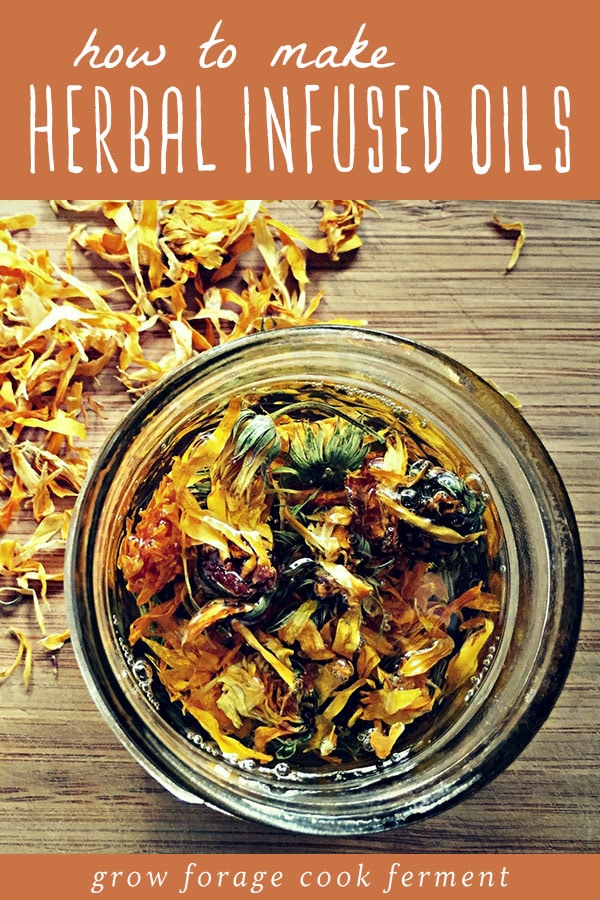
Want to save this post for later?
Herbal Academy Courses
Well hello there! As I’ve mentioned before, I’ve been taking The Herbal Academy’s Introductory Herbal Course over the past several weeks, and I’ve been loving it!
I already had a basic knowledge of medicinal herbs so I wasn’t sure how much I would learn from this course, but it has really surprised me how comprehensive it is.
One important topic that this course covers is how to make infused herbal oils, which is the first step in making numerous body care recipes like herbal salves, body butters and creams (such as my calendula cream).
How to Make an Infused Oil
This is a great time of year to start thinking about making infused herbal oils as you hopefully have some dried herbs laying around that you’ve collected throughout the harvest season.
Dried Herbs for Infused Oils
The first thing you need to make an infused oil is dried herbs. It is very important that the herbs are totally dry before you combine them with oil, as they can cause rancidity otherwise.
Many different types of herbs work well for making infused oils, especially lavender, rosemary, calendula, plantain, yarrow, comfrey, and mullein.
If you don’t already have your own dried herbs, Mountain Rose Herbs has a great selection of medicinal herbs to choose from.
Carrier Oils for Infused Oils
Then you will need to choose the oil that you want to use. I usually use a high quality, light olive oil, but there are many types of carrier oils that you can choose from.
Once you have those two simple ingredients, there are several ways of making infused herbal oils.
Infused Herbal Oil: Windowsill Method
The first one is probably the easiest, but it does take the most time.
This method is best when using oils that don’t go rancid quickly, like coconut or jojoba, as exposure to sunlight can degrade some oils more quickly.
Simply put the dried herbs of your choice into a jar and cover them with oil.
Stir the mixture gently with a spoon to get as many of the air bubbles out as possible.
Then put in a sunny windowsill for several weeks to steep.
Alternatively, you can put the jar in a cool place out of direct sunlight. This will help to preserve the quality of more light sensitive oils, like sweet almond oil.
When you feel it’s ready, simply strain the herbs from the oil.
Cap with a lid and use as soon as possible. Once oils have been infused they have a shorter shelf life, so I try to only make as much as I’ll use within a few months.
Any extra you might have should be stored in the refrigerator for future use.
Infused Herbal Oil: Heat Method
There are quicker ways of making infused herbal oils, as well. You can use a double boiler by putting the herbs and oil in a metal bowl over a pot of simmering water.
Make sure that the oil doesn’t get too hot as to fry the herbs, and it should be done in a matter of hours.
I’ve also used a mini slow cooker on the warm setting to make calendula oil with good results.
A box style dehydrator would also work well, especially if you are already using it for something else.
I frequently use mine to make yogurt, so it’s really easy to add in an extra jar or two of herbs in oil.
Infused Herbal Oil: Oven Extraction Method
The last method that is recommended by the The Herbal Academy is oven extraction.
I have never done this, but it’s the same idea as using a dehydrator.
Put the dried herbs in oil, cover, and put in a low temperature oven for several hours, making sure not to cook the herbs.
Really, it’s as simple as that!
One thing that this course has taught me is that herbal remedies don’t have to be difficult.
While making an infused oil sounds like it could be complicated, it really is as easy as putting two ingredients together and letting them sit in the sun for a few weeks.
If you can make a cup of tea then you can do this!
Now comes the fun part… deciding which herbs you want to infuse!

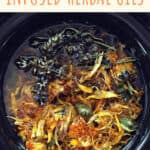
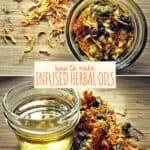
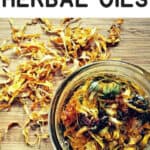
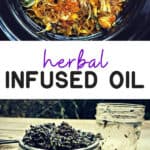
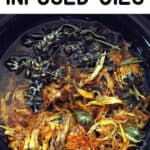
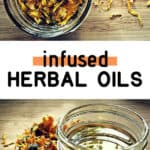
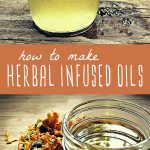
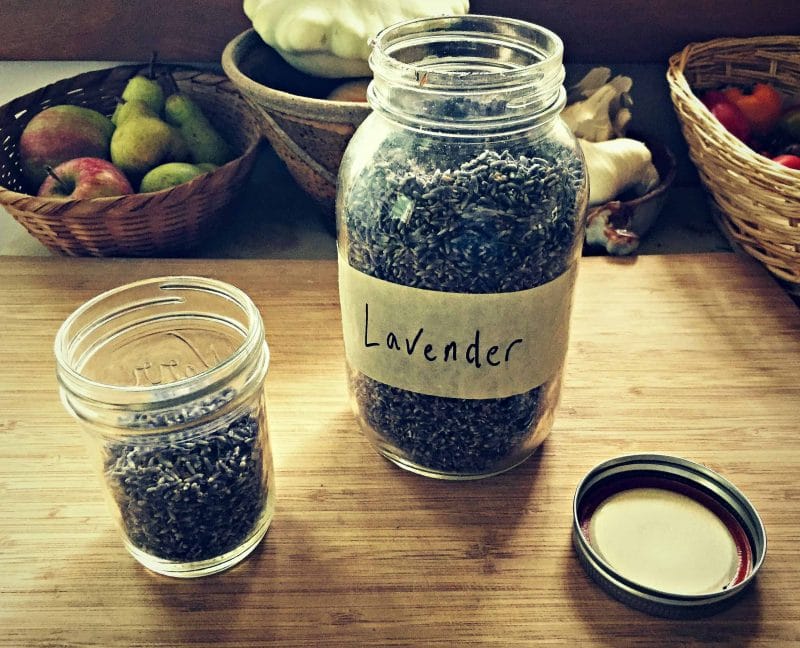
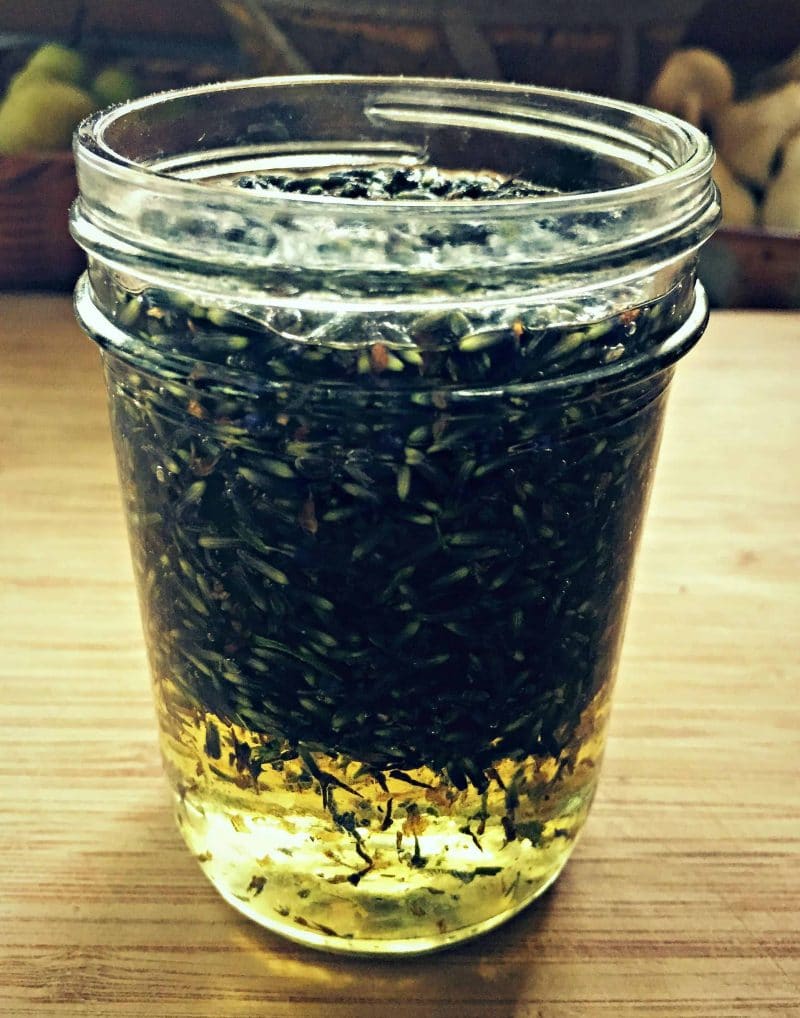
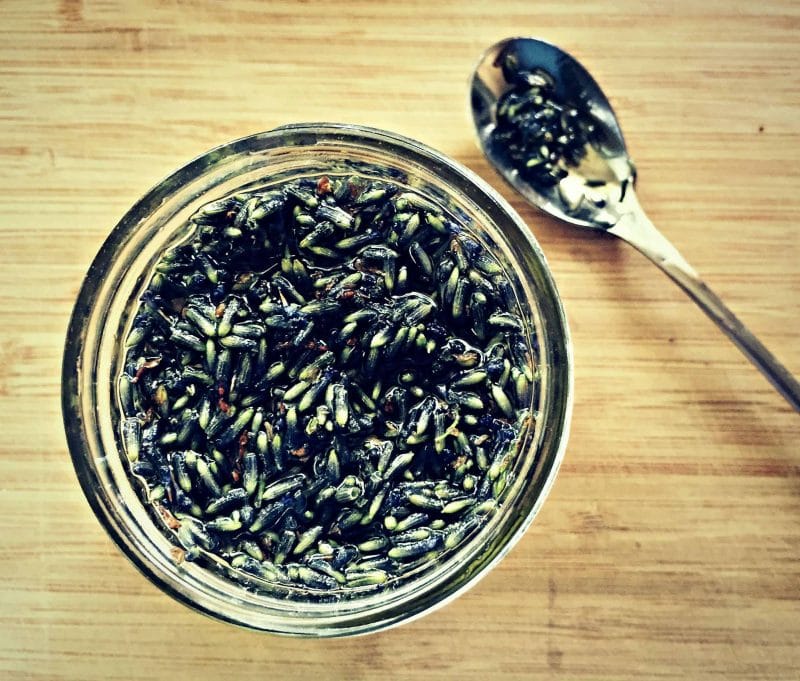
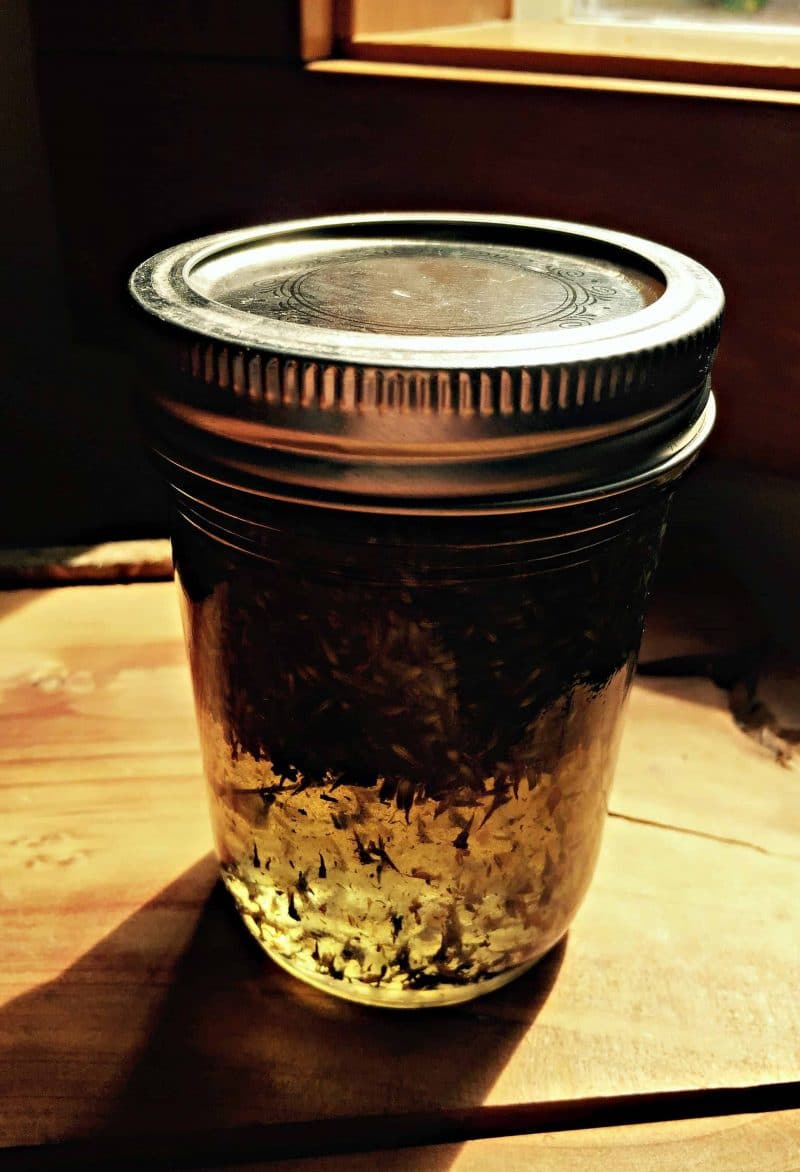
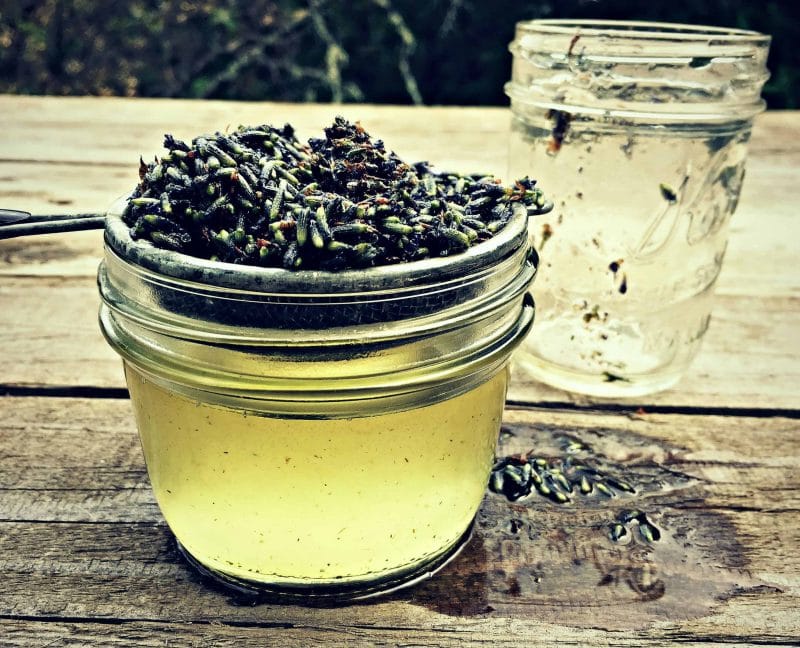
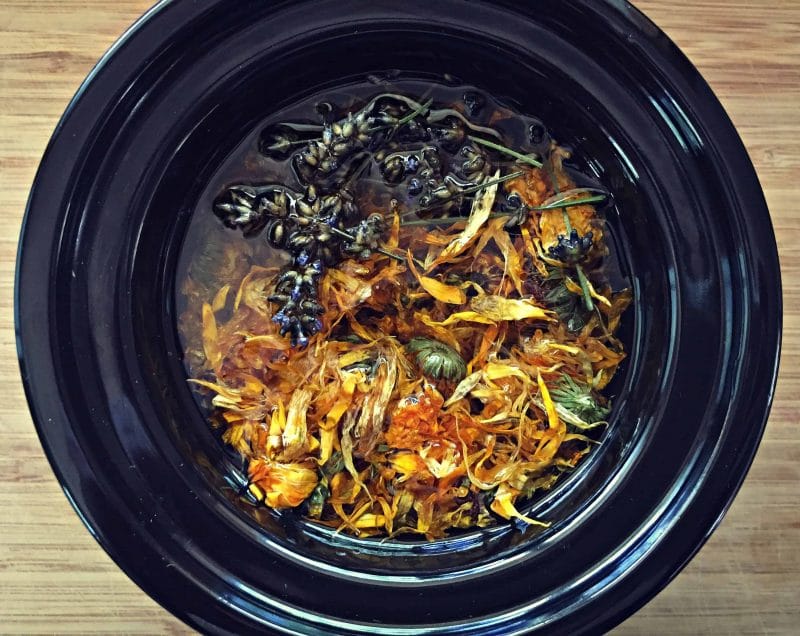
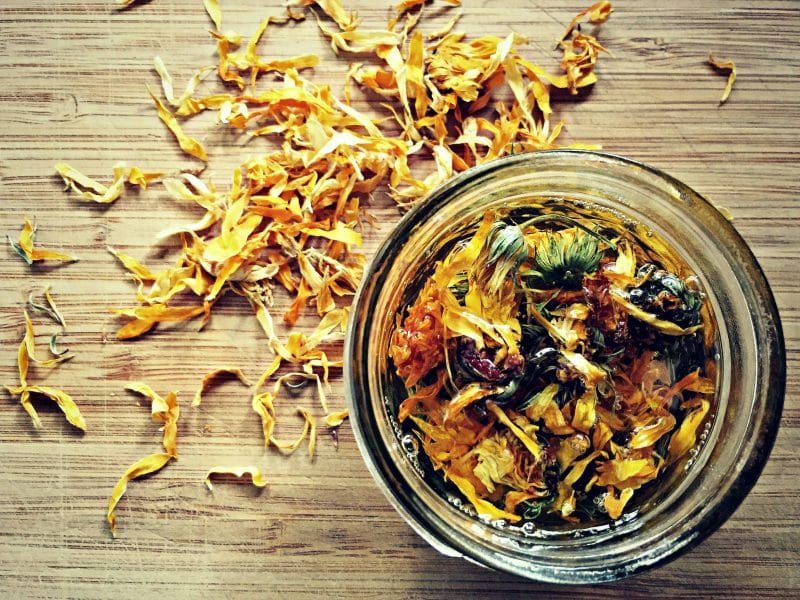
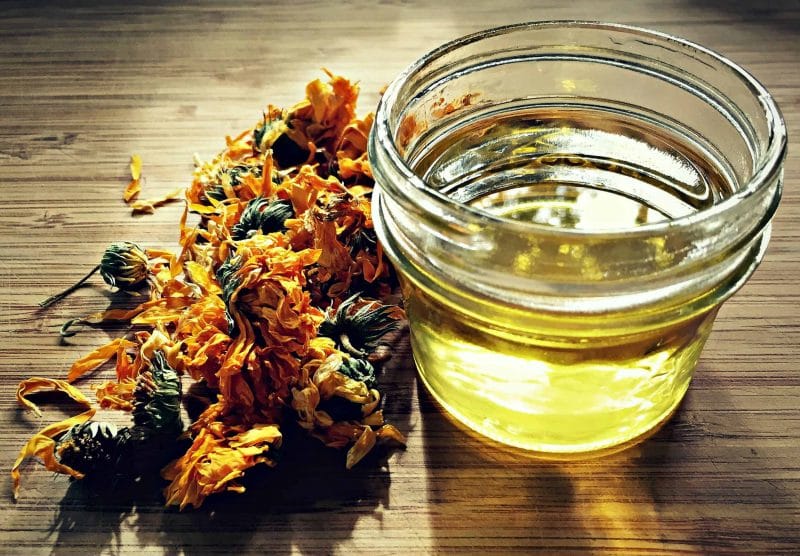

Can you use fractionated coconut oil for infusion
Yes, that’s fine!
Can you infuse several herbs in one oil? I’m a newbie. Thank you for your help!
Hi Gaile. Yes, you can definitely do that!
Hello newbie here, and by newbie I mean I literally don’t know what I’m doing.
So I dried my herbs and put them in coconut oil. But after a few days the coconut oil hardened. Is that normal? Or do I need more than one carrier oil (more than just coconut oil). I hope someone can help.
That’s a great question and one I get asked a lot! I don’t use 100% coconut oil very often for this reason, and when I do I typically do the quick heat infusion method which will extract most of the compounds as the coconut oil is melted. I do use coconut oil as a portion of the oil blend frequently because it has a lot of benefits and is also very shelf-stable. I recommend melting it first before combining it with the other oils. In cool temps, you will see a bit of solidification, but the other oils should keep it mostly liquid as the herbs infuse. I do think that even totally solidified coconut oil will extract some of its properties, but it’s more effective if it’s melted. Hope that helps!
Why do herbal infusion instructions never mention cleaning the herbs or sanitation before infusing? I know it’s preferable to use dried herbs, but from harvesting to infusing, how do we know there isn’t dirt residue, pollen, mold spores, etc. on the herbs that could cause skin problems, even if they are organic? We should be putting only the cleanest stuff on skin, especially delicate skin, especially if in bulk to last a while.
Good ol’ common sense I suppose ;)
I was thinking about the oil being in the sunlight, that you are supposed to let stand in the dark, because of the fact that the oil will go rancid.
When I do a sunlight infusion I always place my jar (with the herbs and oil of choice) in a paper bag then set on window sill. I have never yet had rancid oil using this method.
Hope this helps answer your question.
Yvonne
Hello,
Can i use coconut oil to infuse blackseed?
Dear Kay,
some tips I’ve learned for crockpot infusion:
As much room as the herbs take up in the jar, add that much oil and a little more. Even if the herbs float this is ok. Leave a little room for air! Some things expand with heat.
The jar-in-crockpot is a little like the double boil method, so I placed a small towel on the bottom of the crockpot to protect the glass jar from breaking. Maybe not necessary but some herbs are expensive so I take the precaution.
You fill the crockpot with hot/warm water enough to “bathe” the jars but not enough to cover the lids of the jars. We don’t want water in our infusions! Some people weight down the jars so that they don’t float. I don’t usually have that problem.
The warm setting is usually enough in that 200 degree range (but not higher than this to avoid boiling and cracking!) Put the lid on the crockpot. Leave it in for as long as it needs (some of my glycerites need 2 whole days.) Occasionally swirl the jars if it’s recommended for the herb you’re using. If the water level gets low from evaporation, you can add more warm water to the crock. Don’t let the crock dry completely out.
After the infusion process it’s recommended to let the jars cool a little and dry the outside completely. There will be some negative pressure when opening, but I strain with cheese cloth so it’s necessary or I burn myself.
Strain your infusion into your container of choice to store for the next part of your process. Some recommend dark blue or brown bottles/jars to protect from further light.
I hope this helps! Best wishes!
Ps. I love the lavender scrub idea. I save my cheesecloth strains for poultice for later.
I understand that blue bottles are not ideal. Brown bottles prevent much more protection from sunlight and, therefore, chemical breakdown.
Can calendula infused oil be replaced with calendula essential oil for making the salve? If so how much would I need to use?
No that will not work.
Thank you for the information sharing 😘
If the infused oils have a short shelf life, would adding vitamin e help?
Ive recently made a concoction with sage and glycerin.. just wondering how to keep it fresh i guess.
I found this article through your article about purple dead nettle. If I make an oil out of that, would I use all parts of the plant- stem, leaves and flowers?
Another way to make your infused oil is with the Magical Butter Machine. I got one this last year abd it is so easy to use and you can use it for making lots more than just oils.
HI! I was just wondering could i use coconut oil to infuse instead of these other oils you’ve mentioned?
I don’t see why not. I use coconut oil in my cannabis salve and it works great. Coconut oil has healing properties of its own.
What about grinding the calendula before infusing and use the already measured oils once they are infused? Leaving the calendula in the soap?
If you make a lot of oil use olive oil, it lasts much longer. I’ve use almond and grape seed and when I made in bulk my salves didn’t last as long. Nothing like rancid smelling chapstick. I love the rose scented ideas too! Alkanet is inexpensive and takes very little to get a beautiful hue!
. I am completely new to the life of natural living. So I have many of questions that I’m excited to ask. I have a couple batches of different types of powdered herb and I wanted to try the double boiler method 1st but I’m unsure of the ratio of oil to herbs, how long to let it cook for and what temperature does the water need to stay at. The same type of questions apply to the method of the mini crockpot using the powdered herbs
Love this! I infused lavender in grape seed oil to use for some facial care. After I strained the oil, I ran the lavender buds thru my food processor, then mixed it with some Epsom salts and some of my wonderfully scented oil to make a body scrub.
Ooooh! I like that idea for using the lavender buds afterward!
Wow that’s a great idea!!!
If infusing thru the long method, leaving it for weeks in the sun, how would that work w coconut oil? Is it still infusing if the coconut oil goes hard?
One more question, is hanging up herbs for days/weeks a good drying method?
Thanks
More info on oils, have several herbs growing in my yard . All info is great????
Hi
When infusing oils it always says to leave about an inch of oil at the top with the herbs completely covered. Mine always float to the top and kinda poke through the oil. Will that spoil the infusion? How do you keep the herb from floating to the top and poking through the oil?
If you are using herbs that are completely dry I wouldn’t worry about it.
Ive put calendula in a jar with oil now for 6 months – is this good or do I throw it?
If it is clear and not cloudy, it should be good. Does it smell rancid?
Can chamomile teabags be used to infuse oils?
This is great. I am so glad I discovered your site. Can’t wait to use my lavender today.
I love these instructions. Thanks for such an awesome blog
Hi! I am wondering about the Calendula infused oil for the diaper cream. How much lavender and how long should it sit in the calendula oil for it to be infused enough for the diaper ointment?
hi, you weren’t clear on the amounts of oil, and herbs ? Does it matter how much I use?
Nope, doesn’t matter :)
Can the herbs be used for anything afterwards,or do they have to be thrown out?
Hi,
I use would like to know after making herb olive oil where will I use this oil. Please can you let me know. Can I eat it or use in recipes.
Thanks.
While you could probably eat it depending on what herbs you use, that’s not really what it’s for and it probably wouldn’t taste very good! Herbal infused oils are the basis for salves, creams, lotions, and other topical products.
HI Colleen, I have another idea on how to do this fairly quickly, I tried it today and worked very well. I filled the jars as per your directions, fill w/ oil, and set the jars in some water in the crock pot on low, check the temp after an hour, and don;t let it get above 200F then turn it off. When it cools, its ready. Tomorrow I will make the salve. But it could be done as soon as this is finished. Thanks for the quick tips
how long did you let it sit in the crockpot
Okay I was able to read your instructions to see what I missed. So you 1st place the herbs in a jar and you cover them with a carrier oil 1 inch above the herbs. 2nd you set the jars in a crockpot filing it maybe half way with water? on the setting of low, for about an hour and not allowing the temperature to go over 200 degrees, 3rd once finished you strain the oil out and its ready for use?